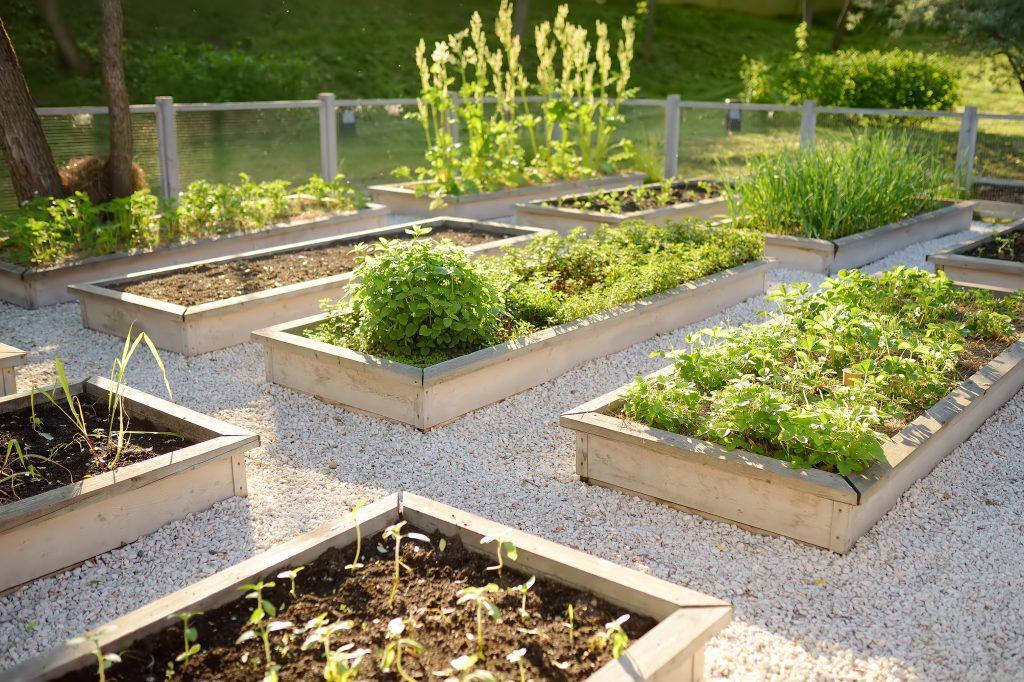Ants in Raised Beds: How to Get Rid of Them!
Ants prefer dry environments, which is why they seek shelter in raised beds during wet seasons.
Ants are a natural part of any garden, and it’s common to encounter them while working in the soil. But why do they prefer to build their nests in raised beds? While the Yellow Meadow Ant can tolerate damp soil and typically nests in lawns, the Black Garden Ant prefers dry, warm locations. Ants avoid loose, sandy soil because their underground tunnels can collapse easily.
Contents
Why Do Ants Choose Raised Beds?

A raised bed, especially once the soil has settled, provides an ideal nesting environment for ants. They often use the walls of the bed for structural support and take advantage of plant roots, unrotted sticks, and fibers in the lower layers to stabilize their nests. Unlike traditional garden beds, which are often cooler and retain more moisture, raised beds tend to dry out quickly and warm up faster—making them especially attractive to ants, particularly in heavy, clay-rich, or wet soils and during rainy summers.
While ants play a beneficial role in compost piles and natural corners of the garden, they can become a nuisance among vegetables. When nesting, they loosen seedlings and may even bite off delicate roots. Occasionally, they will nibble on the root collars of young carrots, celery, and other juicy plants.
How to Encourage Ants to Leave Your Raised Bed
Ants prefer warm, undisturbed environments to raise their young. To make their habitat as uncomfortable as possible, follow these methods:
1. Disturb Their Nest
Ants dislike frequent disruptions. Regular gardening activities such as:
- Digging with a trowel,
- Stirring the soil with a stick,
- Watering heavily,
- Weeding and hoeing,
- Fertilizing (especially with nettle slurry), can make the location unappealing. Over time, the ants will seek a quieter place to build their nest.
Some gardeners pour boiling water onto ant nests, but this can harm nearby plants and soil life. A less aggressive alternative is to dust the soil and plants with algae lime or rock dust, as ants dislike crawling over powdery substances.
2. Use Strong Scents to Repel Ants
Ants have a keen sense of smell, which can be disrupted by strong plant aromas. Try using:
- Wormwood,
- Tansy,
- Peppermint,
- Blooming lavender, by spreading them as mulch between vegetable plants. This masks other scents and discourages ants from settling. To be effective, the mulch should be refreshed regularly.
Pro Tip: If applied early and renewed often, this method can prevent ants from considering your raised bed as a potential home in the first place.
3. Liquid Deterrents
Strong-smelling herbal teas can also be effective against ants. Try brewing a concentrated tea from:
- Peppermint,
- Wormwood,
- Garlic,
- Lavender,
- Tansy.
Pour the tea directly onto ant-affected areas in the raised bed. Similarly, lavender oil, tea tree oil, or concentrated orange cleaner (available in organic stores) can be used. Since liquid deterrents evaporate quickly in hot weather, they should be reapplied regularly.
Preventing Future Ant Infestations
Even after removing a colony, ants may return to inspect their former territory. To prevent reinfestation, consider relocating them using the flowerpot method.
Relocating Ants Using a Flowerpot
Since ants prefer warm, dark spaces, you can take advantage of this instinct by offering them a more appealing nesting location.
How to Do It:
- Take a 5-liter clay flowerpot.
- Fill it loosely with moist wood wool, damp newspaper, or soil.
- Invert the pot over the ant nest and press it lightly into the soil to keep it stable.
- Cover the drainage hole at the top with a stone or other material to keep it dark inside.
When the weather warms up after a few rainy days, ants often build earthen mounds to trap heat for their brood. The warm, dark clay pot serves the same purpose, and if conditions are favorable, the ants—including their queen—may relocate within a few days.
Once they have moved into the pot, carefully slide a board or large trowel underneath and transport the pot to a more suitable location, such as a wild corner of your garden. Keep in mind that if another ant colony already occupies the new site, the newcomers may struggle to establish themselves—especially if their queen remains behind in the raised bed.
However, with some luck, your ants will settle in their new home, leaving your vegetables in peace!


